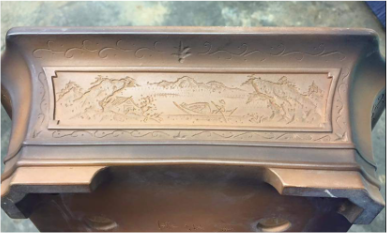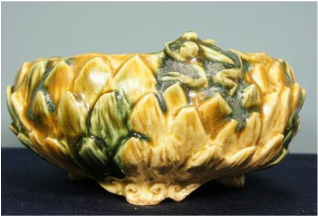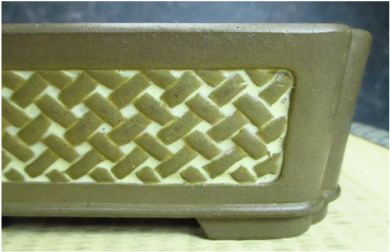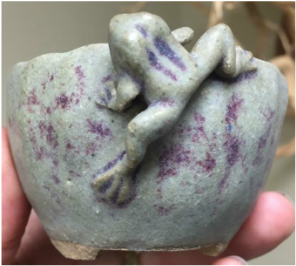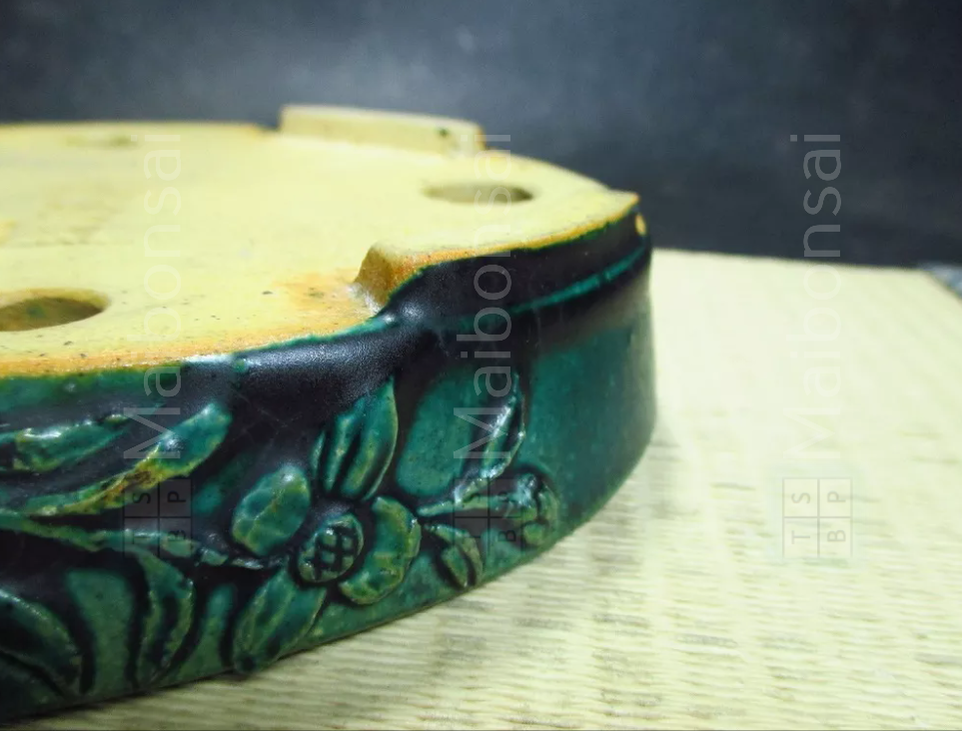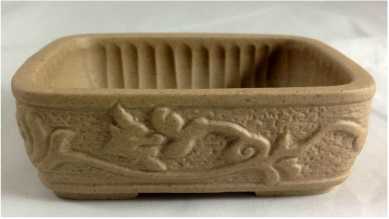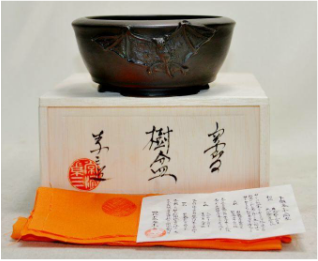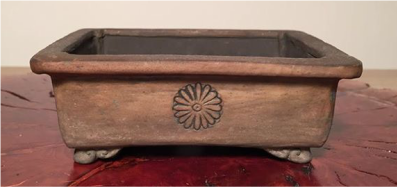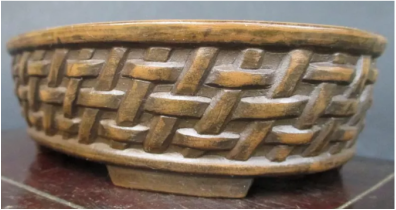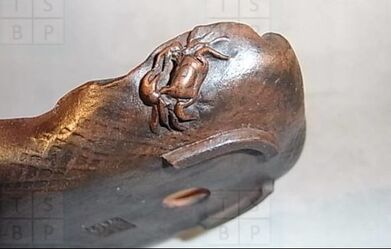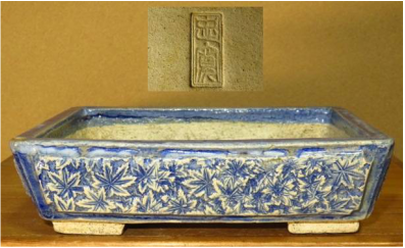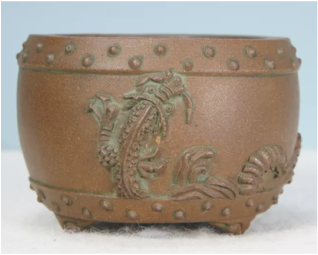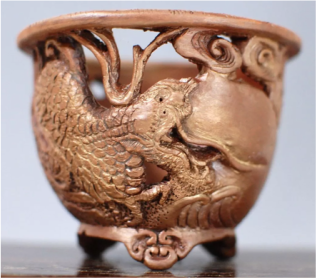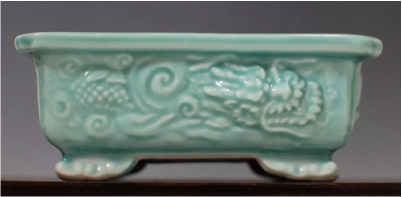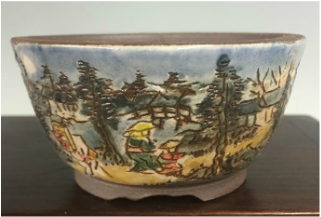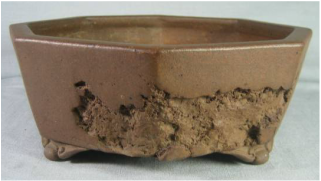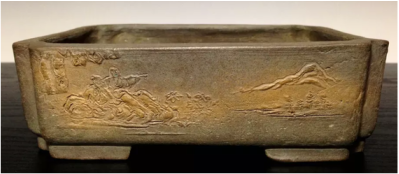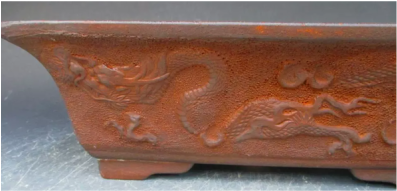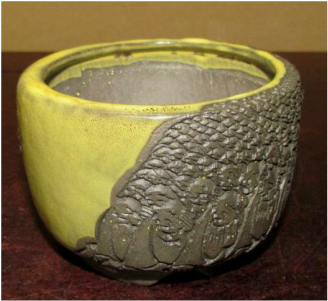Japanese carved / engraved pots
BigeiBigei loves to engrave; and he has produced a very wide range of engraved, sculpted and carved pots.
Hirata Atsumi is a very popular potter from Tokoname, Japan. He produces mostly unglazed shohin, and some chuhin sized pots. They are often simple in design, to complement the tree, yet beautifully constructed. He is best known for his distinctive shaded shudei (vermilion clay) with its burnished look. He also produces some glazed pots, and his more recent work is quite decorative, with, for example, beautiful landscape engravings, carvings, and relief work. Born in 1939, Bigei taught himself the art of ceramics from age 19. He established his own kiln in 1975, which is now closed. A definite favourite, great value, mid-price range potter. You could expect to pay from £30 for a small accent / mame pot, to £400 plus for a nice larger carved chuhin pot, or more for a Sansui! Rising in value! |
KoyoKoichirou Aiba is one of Japan's most popular potters. He was born in 1944, and is currently retired. He is husband to 'Kouso', and father to 'Juko' (Kuniaki Aiba), who now runs the Koyo kiln, which he built in 1970.
He was from a family of potters, albeit not of bonsai containers and is known best for his superb glazes, including his oribe yu glazes, which can arguably rival those of Ino Shukuho, and Heian Tofukuji. However he does also produces superb unglazed pots, as well as suiban, and some beautiful pots with carved motifs. |
Suruga YamasyouNow deceased, Suruga Yamasyou (real name: Yamanashi Shoichi) is arguably Japan's finest ever and most revered maker of carved bonsai pots. He was born in Shizuoka city, Honshu Island, Japan in 1925 and made individual shohin sized pieces decorated with animals; often crabs, frogs, and dragons, carved in relief. His works are generally larger than the other formidable carver of small pots; Okatani Zeshin.
Production levels were low, and refinement and meticulous attention to finishing are a particular feature of Yamasyou's work, with smooth, highly burnished or lacquered finishes - the clay often having been polished to such a high degree, as to leave sumptous, almost leather-like finishes. |
